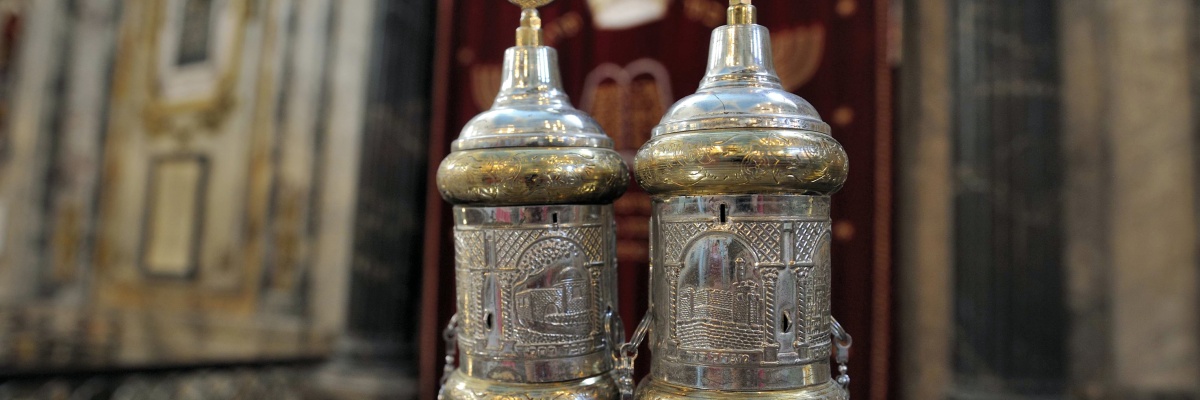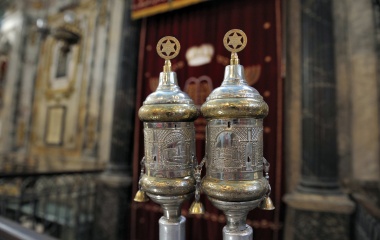
Nice, like many other places of Jewish settlement, first attracted Jews who were fleeing other centres of Jewish life. Many of those expelled from Provence in 1501 found refuge in nearby Nice. As with the four papal states of Provence from which Jews were never expelled, Jews were never expelled from Nice. Until 1860 Nice was ruled by the Duchy of Savoy and thus was not impacted by the many expulsions from France. They were valued for their economic contributions and while never granted equal rights were never expelled either.
By the time Nice became part of France in 1860 the Jews of France had been granted full citizenship and thus equal rights. Many Jews fled to Nice to escape the horrors of World War11 as Nice was under Italian rule and while aligned with Germany, did not deport any Jews. In September 1943 in the midst of the war the Italians “changed sides” and signed an armistice with the Allies. At the point the Nazis occupied Nice and deported some 5,000 Jews. As terrible as that was such represented “only” between 5-10% of the Jewish population – with many of the unknown thousands who had escaped to Nice surviving the war. To put this in some perspective, some 25% of French Jewry were murdered by the Nazis. And that too was relatively “low”. The only countries with a lower percentage of Jews killed during the War were Italy, Denmark and Albania though the latter two countries had a combined population of some 8,000 Jews.
While Provence is full of many small charming towns, Nice is a relatively large city of some 350,000 people. Yet pretty much like all of Southern France it is most beautiful. Sitting on the Mediterranean coast, surrounded by mountains, its natural beauty is complemented by its architectural beauty. Skyscrapers are not allowed –and almost all structures in residential areas may not exceed three stories. It is city made for walking and bicycling with cars greatly restricted in the beautiful downtown core. One of the most beautiful buildings is The Grande Synagogue of Nice which was built in 1886 and can seat, I would estimate, some 500 people.
Shul was full on Shabbat morning as there was a shabbat chatan, which in the Sephardic tradition is celebrated on the shabbat after the wedding. When we visited the shul again on Sunday morning the sound of a bar-mitzva practicing with his teacher from the bimah filled the room. As I write these words on the 17 of Tammuz it was most appropriate that we heard the word nachamu nachamu ami which he will read on the shabbat after Tisha b’Av.
Davening in the Sephardic tradition meant we had the good fortune to be blessed twice by the kohanim on Shabbat. It is nice to see families huddled together under the Tallit of the patriarch of the family. And when pretty much every word is said out loud kavanah, focus, is greatly enhanced. One of the advantages of using a local siddur, one that is slightly different from a standard nusach Ashkenaz siddur, is that one must actually pay greater attention to what one is actually saying – and that is a very good thing.
One of the very interesting minhagim of the shul was the recital of the prayer for the State of Israel as the Torah was being taken out of the Aron Kodesh before the saying of Shema Yisrael. Thinking about it a bit more this makes perfect sense. VaYehi BiNesoa HaAron, the verse we sing as we take out the Torah, is a prayer for the success of the Jewish people on their march to the Land of Israel. Now that we are blessed with a Jewish State what better time to pray for its safety and success.
The Marc Chagall National Museum is situated in Nice – near where Chagall spent the last 20 years of his life. He personally oversaw the design of the museum, which was specifically built to house his Biblical Message Series consisting of 17 monumental paintings. 12 are of Biblical scenes i.e. the five books of Moses, and five depict Shir Hashirim, the Song of Songs. Describing them as stunning and beautiful would be a great understatement. They are no less than religiously inspiring. Each painting focuses on a major biblical theme woven together with themes of modern Jewish life. The Biblical scenes include The Creation of Man, Man in the Garden of Eden, The three angels visiting Abraham, The Sacrifice of Isaac, Jacob’s dream, Jacob’s wrestling with the angels, Moses at the burning bush, Moses receiving the Torah, The Golden Calf, Moses hitting the Rock and the Death of Moses.
One can spend hours upon hours not only admiring but studying Chagall’s wonderful interpretations of the Biblical text (and I say this as one who normally has to be dragged to an Art Gallery).
While Chagall was not observant in any traditional sense how beautiful that he grew great inspiration from the Bible. “Ever since my early childhood, I have been captivated by the Bible. It has always seemed to me, and still seems to me today, to be the greatest source of poetry of all time”. And how fortunate that he has shared that poetry with us.

